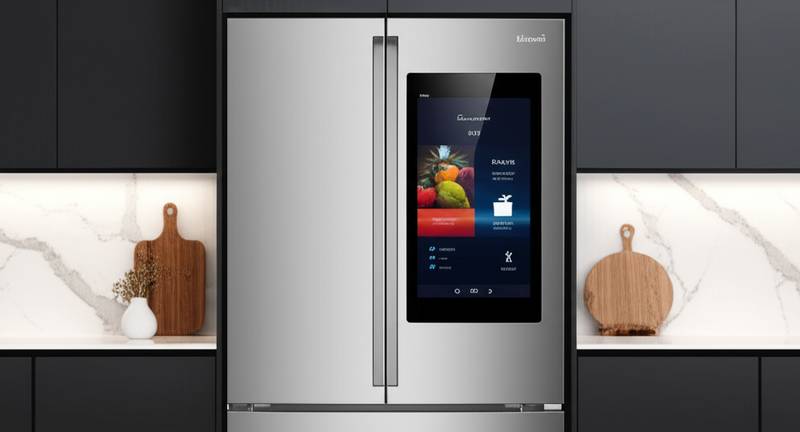Smart Refrigerators with Auto Grocery Ordering Enter the Mainstream
Almost half of connected home owners report that their kitchen serves as the most intelligent space in the residence. As voice assistants and networked appliances integrate into daily life, the smart refrigerator emerges as a central element of efficiency. Equipped with sensors, cameras, and advanced algorithms, these units reshape family routines around planning, shopping, and food preservation.
The Evolution of the Connected Kitchen
The kitchen remains the core of domestic life, and technology now positions it as a command center. Smart refrigerators advance beyond basic refrigeration to become dynamic platforms that monitor contents, recommend dishes, and replenish supplies without manual intervention. These capabilities address common challenges, such as depleting essentials, overlooked perishables, or inefficient budgeting for meals.
Market research indicates robust expansion in smart appliance usage, with participants highlighting decreased food waste and gained time as primary drivers. This trend underscores a broader reliance on innovation to manage routine duties, allowing individuals to prioritize culinary creativity, family interactions, and personal health.
1. Automated Inventory Tracking
Precise stock management forms the foundation of automatic grocery ordering. Contemporary smart refrigerators employ interior cameras, weight-sensitive shelves, and optical recognition to catalog contents accurately. Advanced models identify items upon placement or removal, updating a real-time digital ledger viewable via mobile applications.
Why it matters: Users gain instant access to inventory details without physical inspection, minimizing redundant buys and facilitating meal strategies based on existing resources. For demanding schedules, this functionality fosters streamlined operations and substantial waste reduction.
Example: Samsung Family Hub models stream live interior views to smartphones during outings. When linked to shopping platforms, the system compiles replenishment lists or initiates purchases upon detecting shortages.
2. Predictive Reordering and Delivery Integration
Predictive capabilities elevate automation further by analyzing usage trends, shelf-life information, and personal tastes to forecast depletions. The refrigerator then coordinates restocks through partnered retailers, ensuring timely arrivals.
Why it matters: This process renders grocery oversight passive, with necessities delivered proactively. Families balancing professional, educational, and logistical demands benefit from the relief of automated procurement, preserving time and cognitive effort.
Example: LG ThinQ integrates with leading grocers for frictionless ordering driven by stock levels. The platform adapts to behavioral data, optimizing subsequent deliveries to align precisely with consumption patterns.
3. Smart Recipe and Meal Planning Integration
Smart refrigerators extend utility by curating cooking options from on-hand ingredients, dietary guidelines, and expiry timelines. Certain variants interface with connected cooking appliances to automate preparations, such as preheating ovens.
Why it matters: Such integration accelerates decision-making while curbing spoilage through targeted utilization. It promotes nutritious selections over expedited alternatives and reignites culinary innovation by leveraging available components for diverse recipes.
Example: Bosch Home Connect units deliver recipe ideas via dedicated applications. The system issues alerts for nearing expirations, guiding meal schedules to maximize ingredient viability over spontaneous choices.
4. Integration with Broader Smart Ecosystems
These refrigerators function within expansive networks that encompass lighting, vocal interfaces, and power optimization tools. They dispatch alerts to devices, respond to spoken directives, or modulate operations during low-demand energy periods.
Why it matters: Seamless connectivity yields a cohesive environment where the refrigerator contributes to an adaptive framework attuned to user rhythms. It can notify during commutes about pending pickups or coordinate with utility systems for optimal performance.
Example: GE Profile series link with Google Assistant and Amazon Alexa for verbal inventory queries or list additions. This voice-activated access proves invaluable amid cooking or divided attentions.
5. Sustainability and Food Waste Reduction
Automatic ordering significantly advances environmental goals by tackling waste through meticulous monitoring and behavioral analytics. Devices prompt for expiring goods, propose repurposing methods, and calibrate orders to actual requirements.
Why it matters: Waste mitigation conserves finances and planetary resources, resonating with preferences for accessible green solutions. This blend of practicality and stewardship attracts innovators alongside eco-aware consumers.
Example: Whirlpool smart models sync with applications for vitality notifications and recipes favoring aged items. These prompts diminish deterioration and cultivate deliberate usage habits.
6. Privacy and Data Considerations
Effective operation demands data on purchases, restocking frequency, and brand affinities, enabling tailored services. Producers enhance clarity in data protocols and provide controls for sharing preferences.
Why it matters: Expanding connectivity necessitates reliability in information stewardship. User assurance in ethical and protected handling underpins the viability of these features alongside their ease.
Example: Select manufacturers enable on-device processing to retain data locally, bypassing cloud transmission. This method bolsters confidence for privacy-focused individuals without sacrificing core intelligence.
7. The Cultural Transition to Hands-Free Routines
Automatic grocery ordering mirrors a societal pivot toward delegation of mundane chores to intelligent aids, from climate regulation to provisioning. The refrigerator transforms from a static fixture into a proactive ally.
Why it matters: This evolution elevates devices from curiosities to essentials, normalizing anticipatory assistance. It liberates schedules for pursuits beyond administrative burdens.
Example: Professionals and caregivers value the avoidance of impromptu market visits. Delivery synchronization maintains provision amid demanding periods, ensuring continuity.
8. Adoption Barriers and Future Prospects
Despite rising interest, implementation encounters obstacles like premium pricing relative to conventional units and hesitancy toward dependency on networks for vital functions. Service interoperability also differs geographically, constraining comprehensive automation.
Why it matters: Such impediments characterize nascent innovations, yet scaling production and uniform protocols promise affordability gains. Collaborative efforts between vendors and suppliers accelerate refinements for universal accessibility.
Example: Direct alliances between stores and manufacturers streamline fulfillment, guaranteeing precision in automated replenishments. Industry synergies propel widespread integration.
Implementing Automation for Seamless Daily Management
Smart refrigerators with auto grocery ordering embody a progression in lifestyle orchestration, meal strategy, and nutrition. Artificial intelligence, robust linkages, and user-centric design eradicate persistent household chores.
Declining costs and broadening compatibilities position these tools for ubiquity akin to mobile devices. Progressive iterations inch toward a responsive kitchen that aligns with preferences, advances objectives, and sustains equilibrium independently.
